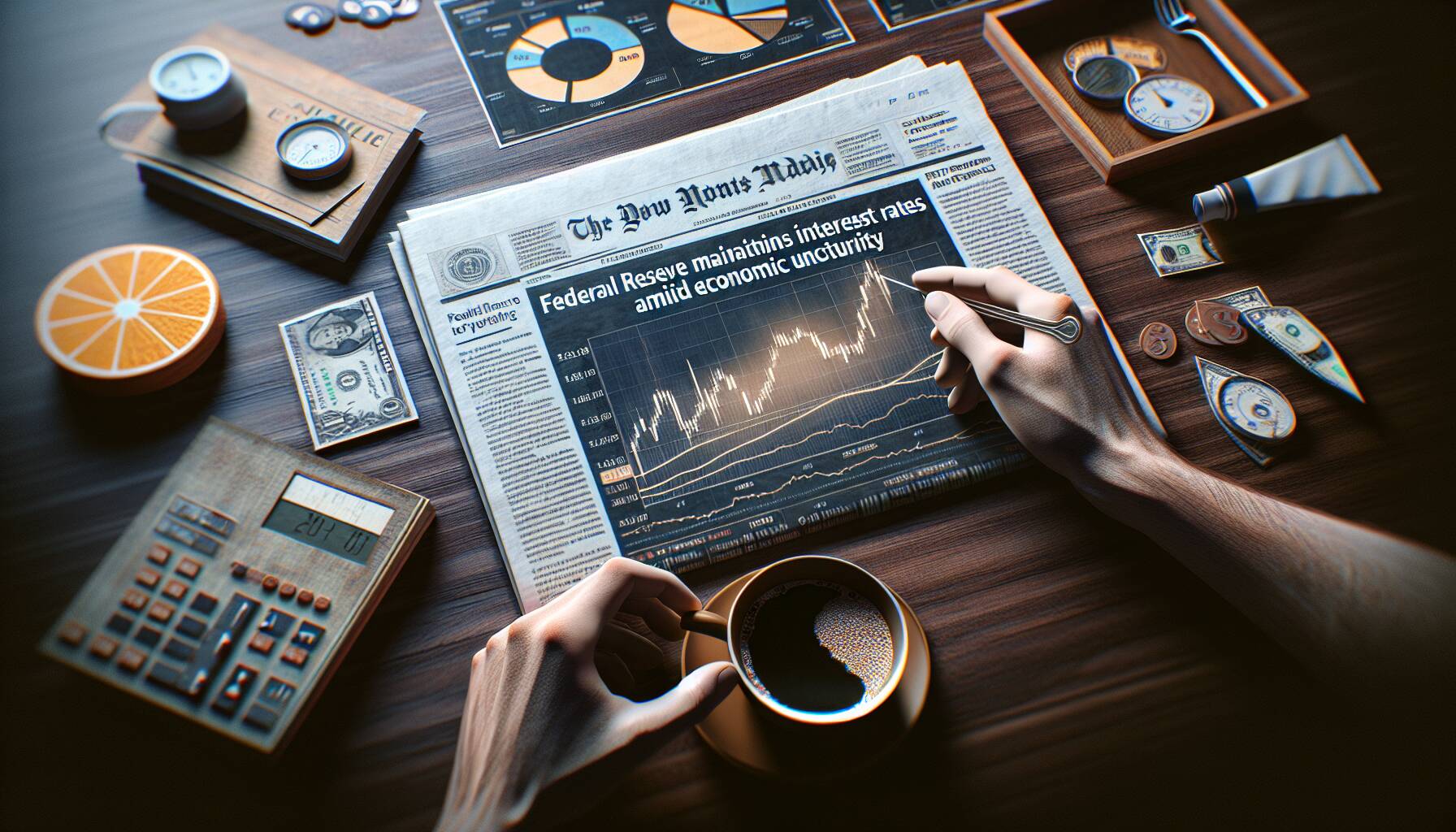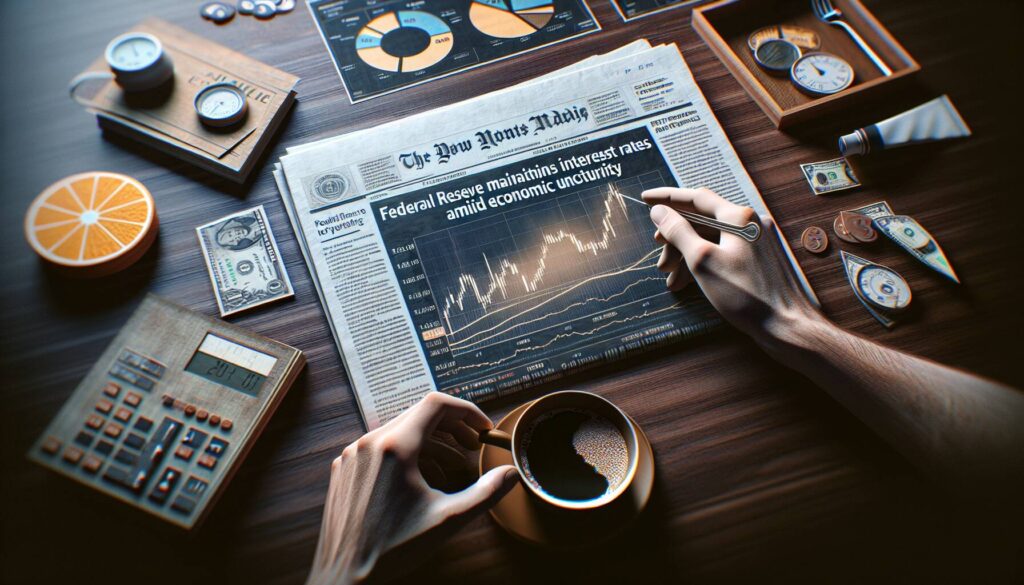The U.S. Federal Reserve recently announced that it is maintaining its benchmark interest rate at a steady range of 4.25% to 4.50%, marking the second consecutive pause since a series of rate cuts at the end of 2024. This decision comes amidst shifting economic projections, which now indicate a notable downgrade in growth expectations. The Fed forecasts that the Gross Domestic Product (GDP) will only increase by 1.7% in 2025, a decline from December’s prediction of 2.1%. This adjustment underscores an atmosphere of uncertainty about the economic outlook, a sentiment echoed in the Fed’s official statements.
In addition to the reduced growth outlook, the Central Bank has modified its inflation expectations, raising the core Personal Consumption Expenditures (PCE) inflation forecast to 2.8% for this year, an increase from the earlier projection of 2.5%. The predictions for inflation in 2026 and 2027 remain stable at 2.2% and 2.0%, respectively. Furthermore, the Fed’s “dot plot,” which illustrates the anticipated path of interest rates, indicates that the fed funds rate is expected to settle at 3.9% by the end of this year, with projections for 2026 and 2027 remaining at 3.4% and 3.1%.
“Uncertainty around the economic outlook has increased,” the Fed noted, potentially alluding to the precarious situation created by President Trump’s threats regarding tariffs.
In the immediate aftermath of the announcement, Bitcoin (BTC) experienced some volatility, dipping to approximately ,500 after fluctuating around ,000 prior to the news. U.S. stocks, on the other hand, retained solid gains, while the yield on the 10-year Treasury bond saw a slight decrease to 4.28%. Investor sentiment has been largely influenced by growing concerns over the impact of potential tariff changes on both inflation and economic growth, particularly as the Fed adopted a more hawkish tone in its decisions earlier this year.
Looking ahead, Fed Chair Jerome Powell is set to address the press at 2:30 p.m. Eastern Time, where traders will be keenly observing for further insights into the Federal Reserve’s monetary policy outlook and its potential ramifications for various markets, including cryptocurrencies.

Economic Outlook and Fed Monetary Policy Insights
The recent actions of the U.S. Federal Reserve and their implications on the economy and individual financial choices are crucial for readers to understand.
- Fed Funds Rate Held Steady
- The benchmark fed funds rate remains constant at 4.25%-4.50% for the second consecutive time.
- This stability follows three consecutive rate cuts, which may provide a temporary reprieve for borrowers.
- Diminished Economic Growth Projections
- The Fed projects GDP growth for 2025 at only 1.7%, down from 2.1% previously expected.
- This decline in growth potential may affect job creation and personal financial opportunities.
- Core PCE Inflation Increased
- Core Personal Consumption Expenditures (PCE) inflation is adjusted to 2.8% for the year, up from 2.5%.
- Higher inflation can diminish purchasing power, directly impacting consumers’ daily expenses.
- Future Interest Rate Projections
- Fed’s dot plot indicates potential rate ending of 3.9% this year, with 3.4% and 3.1% expected for 2026 and 2027.
- This ongoing trend can influence borrowing costs on loans and mortgages in future financial planning.
- Quantitative Tightening Announced
- The Fed plans to slow its securities runoff starting April 1, impacting liquidity in the market.
- This change could affect the stock and bond markets, making investment decisions more critical.
- Market Reactions
- Bitcoin and stock prices are currently volatile, indicating that investor sentiment is shaky amid economic uncertainty.
- Understanding these market movements can help individuals make informed investment choices.
“Uncertainty around the economic outlook has increased,” highlighting the importance of staying informed on monetary policies for personal financial stability.
Analyzing the Federal Reserve’s Rate Decision and Economic Outlook
In a move that reflects growing concerns about the U.S. economy, the Federal Reserve has decided to maintain its benchmark fed funds rate at 4.25%-4.50%. This decision, marking the second consecutive pause following three previous rate cuts, underscores the evolving economic landscape. With the Fed revising its GDP projections for 2025 down to 1.7%, compared to previous estimates of 2.1%, it’s clear that the central bank is taking a more cautious approach. This reflects an increasing uncertainty surrounding economic growth and inflation dynamics.
When comparing this situation to similar news across the financial sector, there are significant advantages and disadvantages that stand out. One competitive edge for the Federal Reserve is its transparency regarding future adjustments, as seen in its “dot plot” projections. This clarity in monetary policy can help stabilize markets by providing stakeholders with a clear roadmap. Conversely, the downgrade in growth forecasts could exacerbate market volatility, particularly for risk assets. For investors and businesses, the looming threat of President Trump’s tariff regime adds another layer of complexity, fostering an atmosphere of uncertainty that could suppress investment and spending.
The implications of this monetary policy are far-reaching. On one side, conservative investors may find safety in U.S. Treasury bonds as yields dip slightly, while equities might experience a slight reprieve thanks to solid earlier gains. However, this cautious stance could pose challenges for sectors heavily reliant on growth, such as technology and cryptocurrencies, which thrive in more accommodating financial conditions. The Fed’s commitment to slowing the pace of its balance sheet runoff introduces a further layer of complication, as it may signal an intention to tighten financial conditions more than previously anticipated.
For consumers and businesses, the Fed’s projections and statements could create mixed outcomes. Corporations aiming for aggressive growth strategies may face headwinds, struggling against an environment marked by tighter monetary policy. On the other hand, consumers and borrowers could benefit temporarily from stable rates, enjoying sustained access to credit without immediate further increases. Yet, the potential for future monetary tightening looms large, causing anxiety amongst those sensitive to interest rate changes.
Overall, the Federal Reserve’s latest policies illustrate the balancing act of managing economic growth while controlling inflation, ultimately influencing various sectors and stakeholders across the economic spectrum.

















